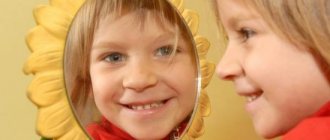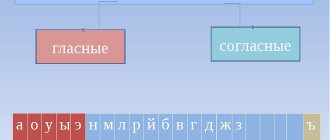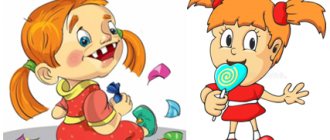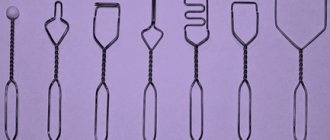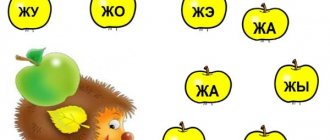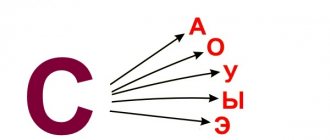How to differentiate difficult sounds?
Games for distinguishing sounds come down to ensuring that the preschooler understands the difference in the pronunciation of similar sounds and learns not to confuse them. This stage of work is carried out after the child has automated sounds, for example, whistling and hissing. And then we will compare them, since most often children confuse S-Sh, C-H, etc.
The simplest thing you can offer your child is to practice attention. We read the poem:
The gopher's song is whistling,
The snake has a hiss.
Listen and find out
Guess these songs.
Now the pictures depict a gopher separately, and a snake separately. We show one gopher and then a snake in turn. The child should pronounce the sound [S] for a long time on a gopher, and [Ш] on a snake. Using the same principle, we differentiate other similar sounds. Confusion verses help well to understand the differences in sounds:
The cat catches the mouse in full view of the children,
Mom washes the bear, painters paint the rat,
The fireman wears a helmet, Sasha ate a helmet,
They gave the candy to MaSka.
I think that's enough on this topic for now. If you have any questions, I will be happy to help you figure it out. And now the traditional request: share the material on social networks, and also subscribe to the news.
Sincerely, Tatyana Sukhikh! Till tomorrow!
By the way, I recommend reading:
Pronunciation of sounds С, Сь, З, Зь, Ц at home
In order for your child to please you with the correct pronunciation of problematic sounds, you need to work with him at home. The process of making whistling sounds in a child consists of three main stages:
- Articulation gymnastics. It includes exercises that prepare certain movements of the articulatory apparatus, the position of the tongue and lips necessary for the pronunciation of whistling sounds. Therefore, a set of exercises should not be random.
- Sound production. In order for a preschooler to be able to control the articulatory apparatus, he must know what position his lips, teeth, and tongue occupy at the moment of pronouncing a sound. The child initially receives this information in the form of a fairy tale, and subsequently consolidates it in practice with the help of an adult.
- Sound fixation. For this there is a wide range of possibilities: from pronunciation of a chain of sounds, syllables, words to fairy tales using the necessary sounds “s”, “s”, “z”, “z”, “ts”.
Testing a child’s ability to distinguish the sounds S, Z, C
Before you start working with your baby, you need to check how well he can handle the differentiation of whistling sounds. To do this, you can use the following task.
Offer to repeat after you the words: “airplane-badger-coconut”, “blue-geese-moose”; “hare-goat-watermelon”, “winter-newspaper-star”; "heron-egg-cucumber".
It’s easy to create such collections yourself. Listen closely to how your child pronounces words and the problematic sound will stand out.
Articulation gymnastics for whistling sounds
- "Smile". Invite your child to smile widely without showing his teeth.
- "The hippopotamus yawns." The baby opens his mouth wide and wide.
- "The snake is teasing." Stick out the snake (sharp tongue) and hide it between tightly compressed lips.
- "Tick-tock." We stick out the tongue and move it left and right.
- "Angry Kitten" The preschooler smiles with his mouth open. The tip of the tongue rests on the lower teeth and alternately curves and then relaxes.
- "Tube". Suggest making a tube from the tongue: stick it out, bending the side edges up. Let the child try to blow into the resulting “tube”.
The block includes 2-3 exercises. Each is completed within 5 seconds. It is possible to alternate exercises. The recommended total warm-up time is 5-10 minutes. It is advisable to do it daily.
Establishing correct articulation
In order to develop correct articulation in a child, adults need to know its features, which are as follows:
- The teeth are closed, but there is no need to squeeze them. Let a natural millimeter gap remain.
- The lips smile and tune in to the vowel sound that follows the whistling sound.
- The tip of the tongue rests on the lower teeth, its back (middle part) is curved.
- The lateral edges of the tongue are pressed against the upper molars.
- The soft palate is pressed tightly against the back wall of the pharynx, air does not escape into the nose.
This articulation applies to all whistlers. The difference is that pronouncing Сь requires more strain on the tongue than with hard S. The sounds З, Зь are pronounced in the same position of the articulatory apparatus, but with the voice connected.
Gymnastics and articulation organs should be performed in front of a mirror. The child watches as the adult shows him, and then repeats it several times, watching himself in the mirror.
Let's master the sounds while playing!
To develop a preschooler’s phonemic awareness, teach sound analysis and, of course, automate and differentiate sounds, speech therapists advise and use didactic games themselves. I selected games suitable for children 5-6 years old, since at this age they work especially hard on correct sound pronunciation and getting rid of diction defects.
Attributes are usually the simplest in such games, the most common are in pictures:
- “Treat Zoya with sweets” - you need an illustration with a picture of a girl (or anyone: a boy, a cat, a fish), cut out blanks in the form of candies from cardboard. On one side of the “candy” we paste an image of an object whose name begins with the sound that needs to be automated, for example [C]. Background: Zoya loves sweets very much. Let's treat her!
The child must choose those “candies” that depict an object starting with the letter C. If he pronounces the word correctly, he can treat Zoya, but no, the adult takes the candy.
- “A Hedgehog is Dreaming” is a drawing with a sleeping hedgehog, and what he is dreaming of is depicted on clouds cut out of cardboard. An adult sets a task: the hedgehog is sleeping and he dreams of objects, all starting with the letter [Z]. Find his dreams!
- “It’s Carlson’s Birthday” – an illustration with Carlson, blanks in the form of wrapped gifts, on the back of the gift there is an image of objects. You need to choose as a gift those whose names begin with a whistling sound. In principle, the background and pictures can be about anything. But it is important that during the lesson there are playful, surprising, visual moments.
- “Sounds in Houses” is a modular game based on cut out or drawn houses. A sound diagram is added to the house, where the position of the syllable with the sound being studied in the word is indicated. We also need pictures with objects whose names correspond to sound patterns and those that do not. It is clear that the task is to “place” the necessary pictures in the house.
Automation of sound
Exercises for automating the sound S: isolated, in syllables, words and sentences.
Automation of the sound of Sya begins with the easiest tasks for the baby.
Sing the “water song.” Say the sound Sya with a smile for a long time, on one exhalation: s-s-s-s...
Repeat straight syllables:
s-s-s-s-s-s-s-s.
Repeat the reverse syllables:
as-os-us-us-is-es-es-es-es-es.
Repeat the syllables where the sound S is between the vowels.
asi-ase-ase-asyu-asya usi-use-use-usyu-usya isi-ise-ise-isyu-isya axis-ose-ose-osyu-osya ysi-yse-yse-ysyu-ysia
Repeat straight syllables with consonant clusters.
sti-ste-sty-stu-sty sleep-spe-spy-spy-spy smi-sme-smo-smy-smy ski-ske-sko-sku-skya snya-sne-sno-snu-snya swee-swe-swe -syu-sya
Repeat the words where the sound S is at the beginning of the word.
Si: Sima, Simone, blue, sitting, sieve, siphon, blue, bruise, radiance, sitting, symphony, shine, blue, turn blue. Behold: hay, seven, family, seed, sowing, Senya, Seva, network, networks, sow, canopy, net, seeds, gray-haired, today, second, sow, family. Sho: Shoma, salmon. Su: suite, here. Xia: sit down, there and there. Confluence of consonants: poems, back, sleeps, snapshot, pig, pig, pork, pig breeder, retinue, wall, wall, flow, Stepan, steppe, snow, snowman, snowfall, laughter, change, sour cream, light, Sveta, shine, scheme , take off.
Repeat the words where the sound S is in the middle of the word.
Asya: Vaska.
Axle: string bag, pug, eighth.
Si: taxi, aspen, aspen, axes, spout, wear, geese, mow, Maxim, boletus, doggie, antennae, barefoot, Osip, bead, bead.
Is: letter.
Behold: autumn, eight, ash, song, songbook, Vasenka, insect, gazebo, hen, cassette, fidget, muslin, pouch, pool, hang.
Yes: braid.
Sho: that's it, ribbon.
Xiu: everywhere.
Sya: Asya, Vasya, goslings, Tosya, joint, oatmeal, ten, grandfather, grandmother, ten, carry, mow, knead.
Repeat the words where the sound S is at the end of the word.
Axis: axis, maybe.
Us: goose.
Ys: heights.
Is: inscription, signature, bend over. Yes: all.
Yus: I’m afraid, I wash myself, I wash myself, I get dressed, I get up.
Repeat words with two S sounds.
Sit down, seventy, lisp, demolish, mixture, laugh, whistle.
Repeat the phrases.
the goose family the eighth house blue ribbon crumpled fabric new suit
blue pouch thin aspen gray-haired grandfather aspen arbor blue bead
autumn day spring sowing steppe geese seven carriages school of geese
Repeat the proverb.
If only this laughter would be for everyone.
Repeat the sentences.
Three words: Asya washes the sieve. Maxim sows seeds. The dog eats sausages. The goose has goslings. Vasya is herding geese. Senya is carrying a letter. The aspen has boletus. Seva sings a song. Pigs eat oatmeal. Maxim walks barefoot.
Four words: Senya blows the whistle. Vasya is on the bus. The pig is sleeping on the hay. Grandma has ten geese. Asya has her mother's cassettes. Goslings are sitting on the hay. There is an inscription on Vasya's cassette. The light shines on the wall. Vasenka the cat is rolling beads. A sieve hangs on the wall. Senya's cat has a mustache. Grandpa has a blue pouch. The pug is sitting in the snow. There are seven sausages in the package. Grandma is sitting under an aspen tree.
Five words. The cat Vaska is sitting on an aspen tree. Today Seva is coming to visit. Asya's window has thin aspen. Vasya the cat walks through the snow. Asya brings home an autumn bouquet. My family is sitting in the gazebo.
Six words. Semyon has a lot of salmon in his nets. Asya and Tosya are traveling in a taxi. A hen sits in the entryway against the wall. Gray-haired grandfather Semyon has a lot of seeds.
Seven words. Neighbor Vasya goes to visit Maxim.
(based on the book by E. N. Spivak, automation of sound S)
